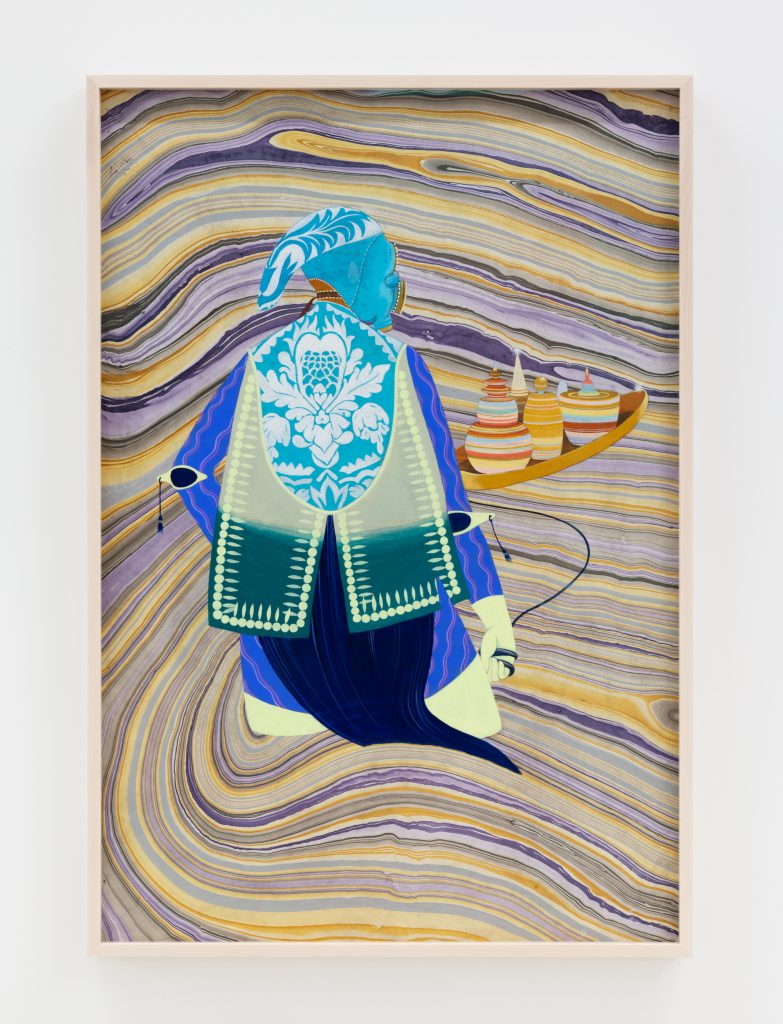
Rajni Perera, Flood, 2020, mixed media on marble paper, 92 x 61 cm, courtesy of Patel Brown Gallery, Toronto
Rajni Perera, Flood, 2020, mixed media on marble paper, 92 x 61 cm, courtesy of Patel Brown Gallery, Toronto

“Moving is all our blood knows about. Transition and trajectory become like different ends of the same instruments’ numerous facets in a slow dance with many arms,” writes Rajni Perera in her recent visual essay “A primordial culture” (2020). Her practice is “tentacular” and often unravels scenes from invented futures while conceiving hybrid characters that allude to ancestors, divinity, and monsters. Perera assembles, camouflages, and collages elements of sacred iconography, goddess cults, and popular mythology from South Asia to craft a subversive aesthetic and summons multiform dimensions of female representation and BIPOC lived experience such that her work operates as a restorative and imaginative force.
Perera’s most recent works are inspired by her Traveller series (2019), which engaged circuits of loss, rebirth, and planetary extraction through ancestral spirit beings, armored matriarchs, geocosmic fiction, and embodied stories of diaspora personalities in present and ancient times. Working through the pandemic from her studio in Toronto, Perera has been marbling paper, composing murals, and creating functional sculptural works like masks, costumes, and props that signal a transformation of selfhood and innovate protocols of defense, convergence, and protection.
Previously exhibited in Sri Lanka, the artist’s series Embellished Photography (2014–18) puts role-play and cross-dressing into action while challenging the hierarchies of representation—norms of visibility and invisibility—in colonial histories of photographic forms. Embellishment is a source of recoding the space of portraiture in theatrical and surreal ways while drawing on historical practices like hand-tinted photography and Persian and Indian miniature painting. Perera’s bejeweled postcolonial subjects challenge class divides and racial prejudice posed amid astral and aristocratic backdrops to unite with more-than-human agents like serpents and flower eaters.
Perera’s projects, including (M)otherworld (2018), query the rampant threats of toxicity and ask what sort of avatars we might mutate into as the planet reaches its carrying capacity. She wonders what the aftermath will be once the old world is gone while circling codependent models of life found in indigenous cultures, civilizational records, and mythological fabulation.
Rajni Perera, Flood, 2020, mixed media on marble paper, 92 x 61 cm, courtesy of Patel Brown Gallery, Toronto